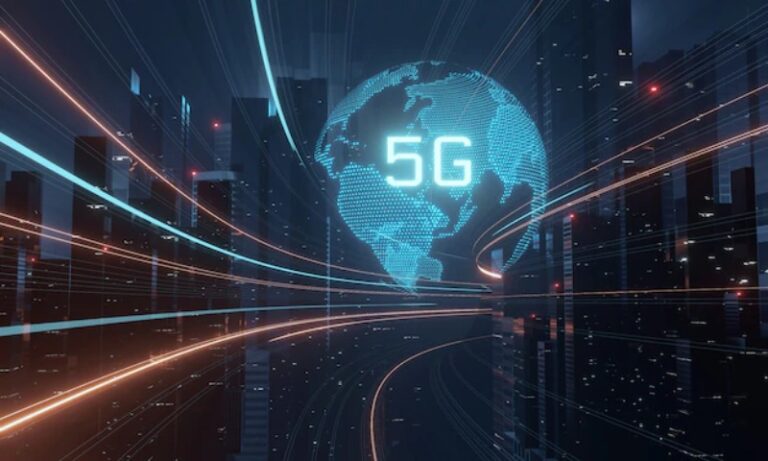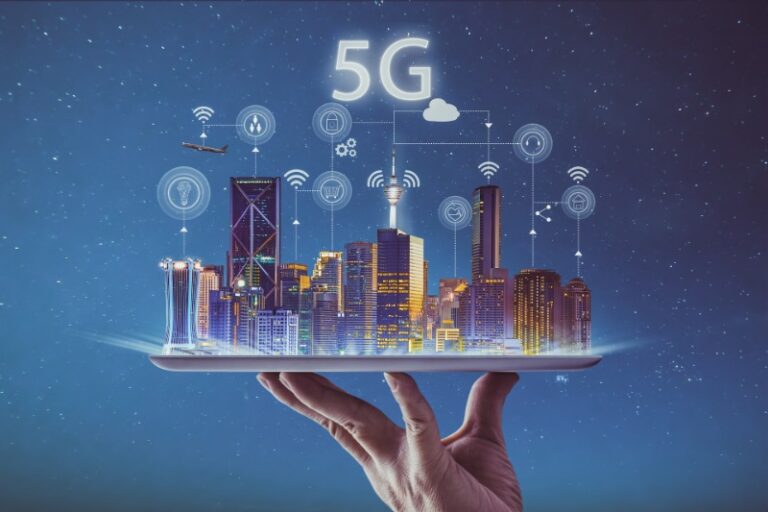Network Slicing & Hybrid Cloud Computing
5G facilitates the development of new business models in all industries. Even now, network slicing will play a critical role in enabling service providers can offer innovative products and services to access new markets and develop their companies. Network slicing is the process of layering numerous virtual networking on the pinnacle of a common network domain, which is a collection of network connections and computational resources. Cloud computing services and Slicing networks allow network operators to enhance network resource utilization and wide scope.
What is network slicing?#

Network slicing is the carriers' best response for building and managing a network that matches and surpasses the evolving needs of a diverse set of users. A sliced network is created by transforming it into a collection of logical networks built on top of shared infrastructure. Each conceptual network is developed to match a specific business function and includes all of the necessary network resources that are configured and linked end-to-end.
Cloud computing services and Network Slicing#
Cloud computing services along with Network Slicing enable new services by combining network and cloud technologies. Cloud Network Slicing is the process of creating discrete end-to-end and on-demand networking abstractions that comprise both Cloud computing services and network services that can be managed, maintained and coordinated separately. Technological advances that potentially benefit from cloud network slicing include critical communications, V2X, Massive IoT, and eMBB (enhanced Mobile Broadband). Distinct services have different needs, such as extremely high throughput, high connection density, or ultra-low latency. According to the established SLA, these must be able to accommodate services with different features.
In Content Delivery Network#
Content delivery network slicing was developed to handle large amounts of content and long-distance transmissions. Content delivery network slicing as a Service (CDNaaS) technology can build virtual machines (VMs) across a network of data centres and give consumers a customised slice of the content delivery network slicing. Caches, transcoders, and streamers deployed in multiple VMs let CDNaaS manage a large number of movies. To produce an efficient slice of Content delivery networks, however, an ideal arrangement of VMs with appropriate flavours for the various pictures is necessary.
5G Edge Network Slicing#

Distinguishable offerings with assured quality of service to varied clients are enabled by 5G Edge network slicing across the shared network infrastructure. It is an end-to-end solution that operates across the Radio Access Network (RAN), the transport layer, the Core network, and the enterprise cloud.
5G service types#
The following 5G service types are the high-level types of network slice architecture which employ slicing for differentiated traffic handling:
Enhanced Mobile Broadband- delivers cellular access to data in three ways: too dense groups of users, extremely maneuverable users, and consumers scattered across large regions. It is based on characteristics such as massive networks of numerous entries, multiple-output (MIMO) transmitters and the mixing of bands beginning with standard 4G wavelengths and reaching into the millimetre band [(Kourtis et al., 2020)].
Massive Machine-Type Communications - services designed to serve a wide range of devices in a compact area while generating little data (tens of bytes/sec) and withstanding significant latency (up to 10 seconds on a round trip). Furthermore, the requirements mandate that data transmission and reception consume little energy so that gadgets can have great battery lifetimes
Ultra-reliable low-latency communications - 5G Edge network is used to provide encrypted systems with latencies of 1 millisecond (ms) and great dependability with minimal, or perhaps even nil, transmission errors. Hardware optimization on MIMO antenna arrays, concurrent manipulation of several bandwidths, package encoding and computing methods, and efficient signal handling is used to achieve this.
Advantages#
Slicing, in conjunction with virtual network activities, is the key to "just right" services for service providers. More capacity to modify affordably gives the following benefits to service providers:
- Reduce the obstacles to testing out new service offers to create new income prospects.
- Increase flexibility by allowing additional types of services to be supplied concurrently because they do not require dedicated or specialised hardware.
- Because all of the physical infrastructures are generic, easier scalability is feasible.
- Better return on the investment is also possible since the capacity to continually test new things allows for the most efficient use of resources.
Conclusion#
As the 5G edge network, Cloud computing services and Content delivery network introduces new technology and opens up new business potential in many industries, businesses are searching for creative solutions to fulfil their demands and capitalize on new chances. Enterprise users expect automated business and operational procedures that begin with buying the service and continue through activation, delivery, and decommissioning. They want services to be delivered quickly and securely. Communication service providers may satisfy all of their corporate clients' demands by slicing their networks.

